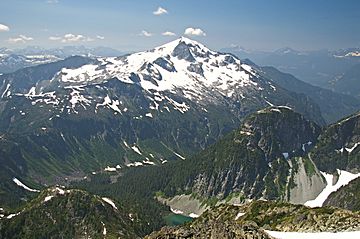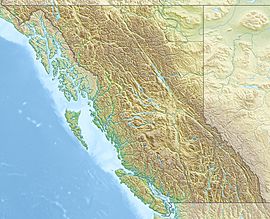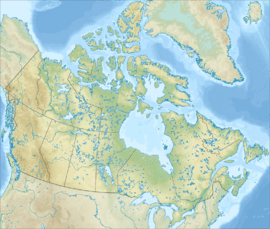Mount Sedgwick (British Columbia) facts for kids
Quick facts for kids Mount Sedgwick |
|
|---|---|

Mount Sedgwick, northeast aspect
|
|
| Highest point | |
| Elevation | 2,082 m (6,831 ft) |
| Prominence | 802 m (2,631 ft) |
| Parent peak | Mount Tantalus (2608 m) |
| Geography | |
| Location | Tantalus Provincial Park British Columbia, Canada |
| Parent range | Tantalus Range Coast Ranges |
| Topo map | NTS 92G/11 |
| Climbing | |
| First ascent | 1909 by H. Dowler |
| Easiest route | Scrambling |
Mount Sedgwick is a tall mountain peak in British Columbia, Canada. It stands about 2,082 meters (6,831 feet) high. You can find it in the Tantalus Range, a mountain chain in southwestern British Columbia.
The mountain is located about 13 kilometers (8 miles) west-northwest of a town called Squamish. It is also 8 kilometers (5 miles) south of Mount Tantalus. Mount Tantalus is the highest peak in the Tantalus Range. The closest higher peak to Mount Sedgwick is called The Red Tusk.
Water from Mount Sedgwick flows in different directions. Some water goes west into streams that join the Clowhom River. Other water flows east into Mill Creek, which then empties into Howe Sound.
The first time someone successfully climbed Mount Sedgwick was in 1909. A climber named H. Dowler made this first ascent.
How Mount Sedgwick Got Its Name
The mountain is named after a person named Adam Sedgwick. He lived from 1785 to 1873. Adam Sedgwick was a very important person in the study of geology. Geology is the science that deals with the Earth's physical structure and substances. He helped create modern geology.
Sedgwick traveled in Canada with another famous geologist, Sir Roderick Murchison. They went on trips to study the rocks and land. The name "Mount Sedgwick" was officially given to the mountain on May 3, 1951. This was done by the Geographical Names Board of Canada.
Weather and Climbing
Mount Sedgwick is in a climate zone called the marine west coast climate. This type of climate is found in western North America. It means the area gets a lot of rain or snow.
Most weather systems come from the Pacific Ocean. They travel east towards the Coast Mountains. When these weather systems hit the mountains, they are forced to rise. As they rise, they cool down and drop their moisture. This process is called Orographic lift. Because of this, the Coast Mountains get a lot of rain and snow. This is especially true during the winter months.
Winter temperatures on Mount Sedgwick can get very cold. They can drop below -20 degrees Celsius (-4 degrees Fahrenheit). With the wind, it can feel even colder, sometimes below -30 degrees Celsius (-22 degrees Fahrenheit).
If you want to climb Mount Sedgwick, the best time to go is usually from July through September. The weather is most favorable for climbing during these months.



